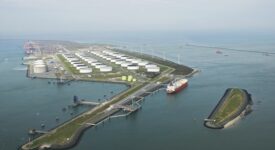Slovakia is considering quitting coal by 2023 – the goal that was set by the country’s Environment Minister Laszlo Solymos at the One Planet summit in December in Paris. This, however, stands in opposition to the claims of Prime Minister Robert Fico who said, while walking throughout the mines, that “if we have things under control, we will do everything… for the coal production to continue (in Upper Nitra).”
Slovakia has two power plants but only one of them – Novaky – receives governmental subsidies to burn domestic lignite, mostly produced in three mines in Upper Nitra. Slovak consumers pay about €100 million every year to fund the subsidies. According to Robert Fico, sustaining coal mining and power is in “the general economic interest”. The mining in the region has for long been considered a leading contributor to the country’s energy supplies and electricity balancing as well as regional employment. The three mines employ about 4,000 Slovaks and the mining companies claim that 11,000 in total depend on the Slovak coal industry.
At the same time, EU’s Energy Commissioner, Maros Sefcovic, is making a case for a transition to geothermal energy in Upper Nitra. There are apparent contradictions in Slovakia’s environmental strategy. According to the recently released draft of the government’s 2030 environmental strategy, the country should embrace a “progressive phase-out of power and heat production from coal” due to local air pollution, calling Slovakia’s annual €100 million subsidies for coal power “environmentally damaging”. The Slovak European Commission Vice-President Maros Sefcovic listed the Upper Nitra region as one of the EU’s three “pilots” in the EU’s newly launched Coal Regions in Transition Platform. He sees the potential of region in transitioning from coal to geothermal energy.







